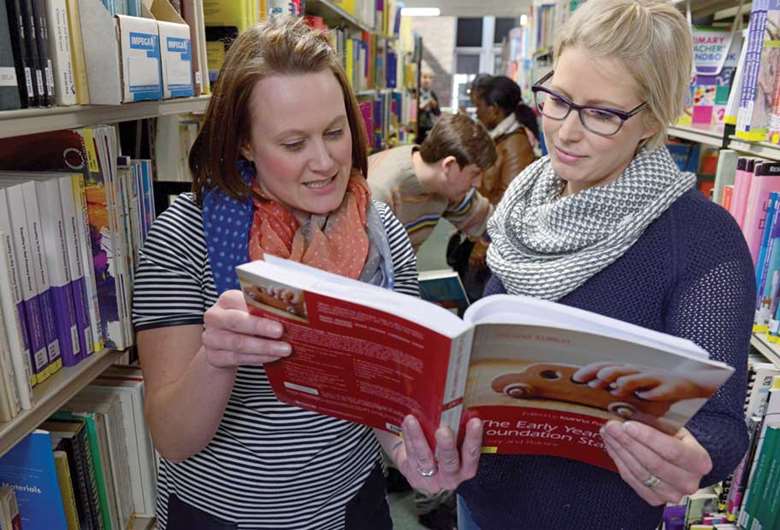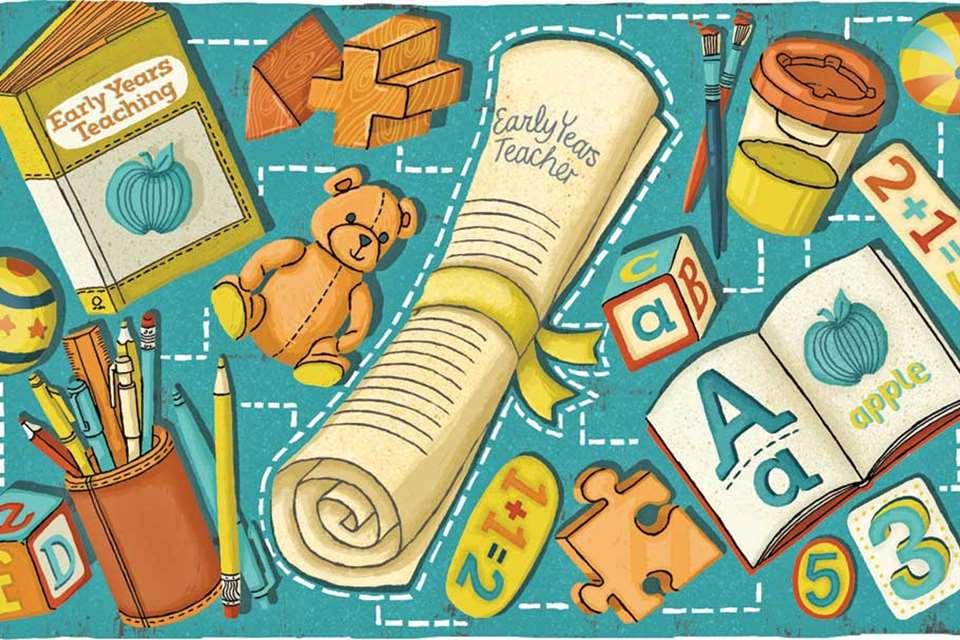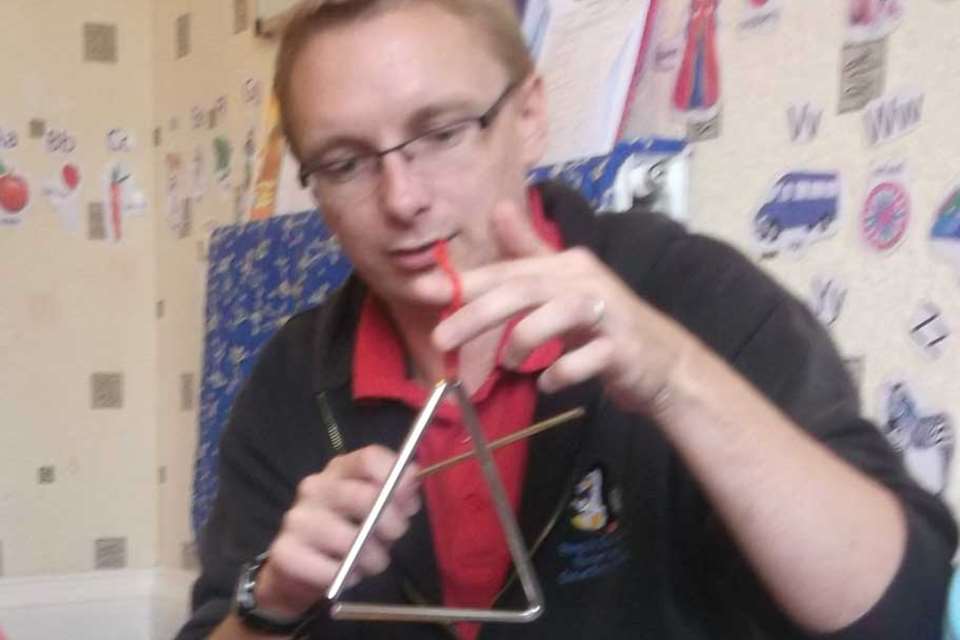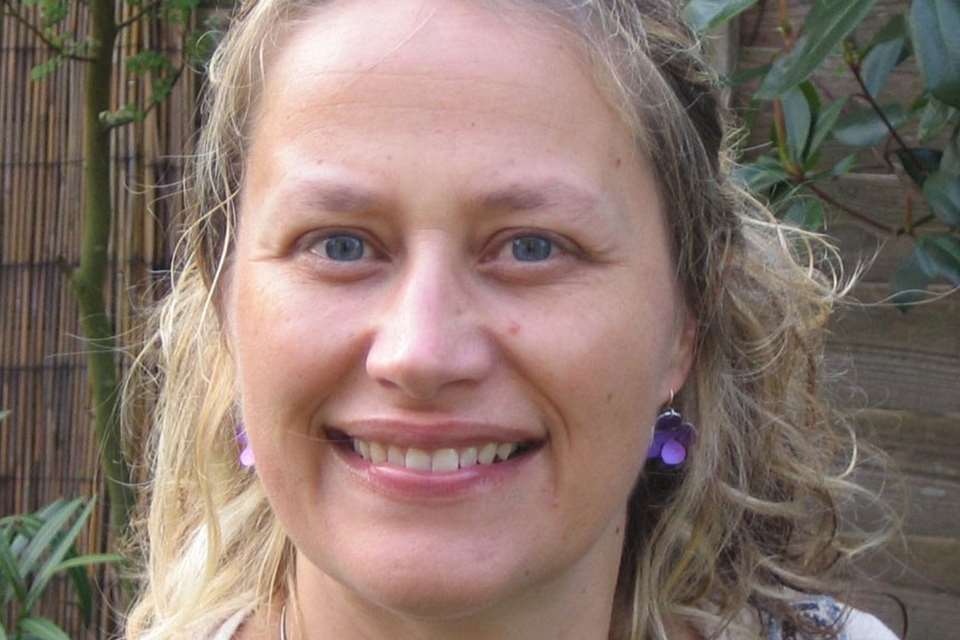Training Today: Early Years Teacher status - Leading the pack?
Gabriella Jozwiak
Monday, June 30, 2014
Gabriella Jozwiak investigates how the Government's new Early Years Teacher Status is viewed by those working in the sector.

More than 40 training providers will open their doors to graduates and undergraduates hoping to achieve Early Years Teacher Status (EYTS) from September. Over the next few years, hundreds of Early Years Teachers (EYTs) will join the 600 who have already gained the status.
These supposedly better-qualified graduates will lead the high-quality teaching of under-fives in early years settings or schools. EYTS replaces Early Years Professional Status (EYPS) and is to be considered equivalent to Qualified Teacher Status (QTS), although it doesn't give entitlement to the same pay scale as QTS. But the qualification has not been met with universal applause.
Training providers have developed EYTS training courses in line with National College for Teaching and Leadership (NCTL) early years Teachers' Standards. Nature Trails Day Nursery director Alison Dyke says these will help professionalise early years teaching, in particular because they expect EYTs to 'underpin practice development with evidence-based ideas'. But she questions whether EYTs will have greater ability to lead and develop practice than the Early Years Professionals (EYPs) they are intended to replace.
Ms Dyke bases her concerns on observations in her nursery, where she supported six EYPs and two EYTs in the first cohort of EYTS students last year. 'There appears to be a danger in the assumption that the "teacher" status in the revised pathway affirms a person's ability to reflect on their own practice and lead practice development,' she says. 'The skills required of an EYPS or EYTS in a leadership role surpass the teaching standards identified in either of the pathways. EYT and EYP leaders must be able to know and understand far more than any teacher in the state-maintained sector.' Ms Dyke gives business acumen, understand budgets and dealing with parents as examples.
She is concerned about the brevity of the 'Assessment-Only' pathway on EYTS courses (one of four available routes to achieving EYTS; see box). This allows graduates with experience of working with children from birth to five years, who can demonstrate they meet the NCTL teaching standards without further training, to gain the qualification over three months. 'Unless there is clear evidence of practice leadership already in place at the time of enrolment, this pathway should be at least a year to enable EYTs to complete the full reflective practice cycle of exploring personal skills and ability, evidence-based ideas, project initiation, project management and most importantly, evaluation,' she suggests.
Two nursery care assistants currently working for Ms Dyke have enrolled on a Graduate Entry Mainstream (GEM) EYTS, one-year, full-time course from next September. Neither has a sector-specific degree. As a result, Ms Dyke provided them with an 'intensive and detailed' induction programme to bring them up to speed with the daily responsibilities that seem to come easily to high-quality practitioners holding a Level 3 diploma.
Ms Dyke suggests the Government should introduce a national induction programme for graduates without relevant degrees. 'There is so much to learn on a practical level in early years,' she says. 'I fear people who have concentrated solely on an academic route into an eventual career in early years may flounder.'
Pre-School Learning Alliance Acorn Grove Nursery manager Erin Molloy completed her EYTS training in May this year. She says she already had workplace experience of most of the teaching on the course. But she valued the training on Key Stages 1 and 2. 'Since I did the course, I've shared the information I learned with the rest of the team,' says Ms Molloy. 'There's a place for knowing more about when the child goes to school and the transition - it helps to understand why we've got certain systems in place.'
But Ms Molloy doubts her setting will employ an EYT. She says few settings will have funding for additional staff, particularly at the higher pay rate that an EYT could expect. 'Maybe private providers could get one EYT between a cluster of nurseries,' she says. 'It would be difficult for me to be a manager and EYT; I don't think I could fit in both roles.'
EYTs can work in early years settings or schools. University of Northampton director of EYTS programmes Gill Handley says this aspect of the status has caused confusion. She has worked with early years employers to develop the institution's EYTS courses. 'Early years settings managers and owners are very positive about having EYTs in settings,' she says. 'We've had some school heads who have queried how they should or could employ someone with EYTS rather than QTS. Our answer is always that if you want somebody with birth to five expertise, employ somebody with EYTS.'
Bishop Grosseteste University, based in Lincoln, has also engaged EYPs, head teachers and local authority consultants to design its courses. Academic co-ordinator EYTS Amy Stancer says EYPs in the group are keen to promote continual professional development among staff through EYTS. 'Some of our partners are "growing" graduates for 2015 and want to continue that journey for staff members, so they're looking at the long-term plan through the foundation degree into EYTS,' says Ms Stancer.
The group has also emphasised the value of a rigorous interview process for applicants. 'The quality assurance we've worked on together ensures people coming into this programme are passionate about young children, and have sustained engagement in developing effective provision and practice for children and families,' says Ms Stancer. As a result, course candidates will be interviewed by the university, partners and children.
The four routes to EYTS
- Graduate Entry (mainstream) - a full-time course for graduates (a first, 2:1, 2:2 and third with or without honours will all be accepted), typically over a year.
- Graduate Entry (employment-based) - part-time, also typically over a year, and designed for graduates in an early years setting who require training and further experience to demonstrate the early years Teachers' Standards.
- Undergraduate Entry - for people who wish to undertake a Level 6 degree in an early childhood-related subject along with EYTS. It is typically a full-time threeor four-year route for those entering the profession.
- Assessment Only - for graduates with experience of working with children from birth to five years old who can demonstrate the Teachers' Standards without further training.
CASE STUDY: Nicola Amies, Director of Early Years, Bright Horizons - School Direct initiative
'Bright Horizons is the only nursery in the School Direct early years initiative, which begins in September. We have eight places in the London and Surrey area. This is a key location for us and also where our early years initial teacher training provider, Kingston University, is situated.
'School Direct is a separate route to the other four on the EYTS qualification, but it's similar to the GEM route. It's a work-based, 12-month course, during which students will be taught elements at university and at their placements with us. They will also have placements at Key Stage 1 - which is a requirement - and at a children's centre.
'It's important graduates on this course get the breadth of experience of working with children from birth to five. The school placement will enable them to support the transition to school and help schools prepare for new children.
'The EYTS has the new early years teaching standards and the same entry requirements for trainee primary school teachers. The greater emphasis on children from birth to five is much appreciated. The word "play" is barely mentioned in the Teachers' Standards, but for us play is important. We're working with Kingston University to ensure that a rich understanding of play and the role it has in children's early development is in the training.
'We will employ the qualified EYTs in many ways. They could be lead practitioners at a clientor a community-based nursery, or peripatetic lead practitioners across smaller nurseries. We already have much-valued staff with EYP and QTS who work in different roles, including teaching on our apprenticeship programme.
'We believe the highest quality of care and education for children is delivered through a mix of staff and qualifications. EYTS will be part of that mix.'
School Direct is intended to give schools more control over the training of the early years workforce. Under the scheme, nurseries and schools can decide which accredited training provider to work with and influence the way in which teacher training is delivered.
To apply, trainees must hold an undergraduate degree, have a minimum of grade C GCSE in English, maths and science, and have passed literacy and numeracy professional skills tests. The eight places at Bright Horizons are part of 59 to have been allocated; the rest are in early years teaching schools. The scheme is to extend to more settings and schools next year.







